The Abandonment and Relocation of Small Towns and Villages in the Southern Ionic Area of Calabria
Abstract
I frequenti e spesso devastanti eventi sismici verificatisi soprattutto nella parte meridionale dell'area ionica della Calabria tra il XIX e il XX secolo determinarono notevoli esodi, sia in termini di emigrazione che di migrazione, sia di spostamento all'interno della regione; inoltre, il dissesto idrogeologico, con alluvioni, frane e smottamenti, specie negli anni Cinquanta del Novecento, influenzò spesso in modo significativo le dinamiche insediative e la relativa struttura del territorio. L'esodo fu all'origine del fenomeno dei cosiddetti "paesi erranti", basato sulla divisione tra gli antichi insediamenti in collina o in montagna e i nuovi insediamenti sorti nel tempo sulla costa o in aree bonificate. A volte l'antico insediamento è abbandonato, a volte è abitato solo in parte, a volte il centro storico e quello nuovo distano solo pochi chilometri, a volte la distanza è notevole. Tuttavia, questo fenomeno è dovuto anche ai “fatti della storia” e, più specificamente, alle risposte che le persone – politici, abitanti, esperti e intellettuali – hanno dato a quei problemi nel corso del tempo. In questa prospettiva, il presente articolo cerca di far emergere come i fattori ambientali si intersecano e si sovrappongono a questioni sociali, culturali, economiche e politiche, spesso a livello nazionale.
The frequent and often devastating earthquakes that occurred especially in the southern part of the Ionic area of Calabria between the 19th and 20th centuries caused considerable exodus, both emigration, migration, and movement within the region; moreover, hydrogeological instability, with floods, landslides, and mudslides, especially in the 1950s, often significantly influenced the settlement dynamics and the relative structure of the territory. The exodus was at the root of the phenomenon of paesi erranti (wandering villages) where depopulation weakened entire communities that were unable to support their ancient settlements and not even able to set up productive activities in the new sites. The phenomenon is also called paesi doppi (double villages) and based on the division between the ancient settlements on the hills or mountains and the new settlements built over time on the coast or in reclaimed areas; sometimes the formersettlement is abandoned, sometimes it is only partially inhabited, sometimes the old and the new towns are only a few kilometres away, sometimes the distance is quite far. However, this phenomenon due also to “the facts of history” and, more specifically, to the answers that people – politicians, inhabitants, experts, and intellectuals – have given to those problems over time. In this perspective, the present paper tries to bring out how the environmental factors intersect and overlay social, cultural, economic, and political issues, often at the national level.
Parole chiave
Full Text
PDF (English)DOI: https://doi.org/10.14633/AHR399
Refback
- Non ci sono refbacks, per ora.
Copyright (c) 2024 Nino Sulfaro

This work is licensed under a Creative Commons Attribution-NonCommercial 4.0 International License.
........................................................................................................................................................................................................................................................................................................................................................
ArcHistoR è una rivista open access e peer reviewed (double blind), di Storia dell’architettura e Restauro, pubblicata dall’Università Mediterranea di Reggio Calabria. La rivista ha cadenza semestrale. È una rivista di Classe A (ANVUR) per l’Area 08 - Ingegneria civile ed Architettura, settori C1, D1, E1, E2, F1.
Comitato scientifico internazionale
Maria Dolores Antigüedad del Castillo-Olivares (Universidad Nacional de Educación a Distancia de España), Monica Butzek (Kunsthistorisches Institut in Florenz), Jean-François Cabestan (Université Paris 1 - Panthéon Sorbonne), Alicia Cámara Muñoz (Universidad Nacional de Educación a Distancia de España), David Friedman (Massachussets Institute of Technology), Alexandre Gady (Université Paris-IV-Sorbonne), Jörg Garms (Universität Wien), Miles Glenndinning (Scottish Centre for Conservation Studies, University of Edinburgh), Mark Wilson Jones (University of Bath), Loughlin Kealy (University College Dublin), Paulo Lourenço (Department of Civil Engineering, University of Minho), David Marshall (University of Melbourne), Werner Oechslin (ETH, Zurich, Stiftung Bibliothek Werner Oechslin, Einsiedeln), José Luis Sancho (Dirección de Conservación de Bienes Histórico-Artísticos, Palacio Real, Madrid), Dmitrij O. Švidkovskij (Moscow Architectural Institute, MARCHI)
Comitato direttivo
Tommaso Manfredi (direttore responsabile), Giuseppina Scamardì (direttore editoriale), Antonello Alici, Salvatore Di Liello, Fabrizio Di Marco, Paolo Faccio, Mariacristina Giambruno, Bruno Mussari, Annunziata Maria Oteri, Francesca Passalacqua, Edoardo Piccoli, Renata Prescia, Nino Sulfaro, Fabio Todesco, Guglielmo Villa
........................................................................................................................................................................................................................................................................................................................................................
Laboratorio CROSS. Storia dell'architettura e Restauro

ISSN 2384-8898

This work is licensed under a Creative Commons Attribution-NonCommercial 2.0 Generic License.

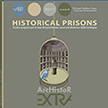
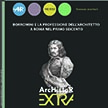
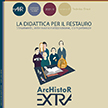

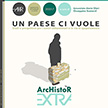
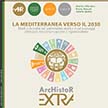
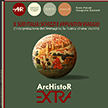
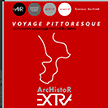
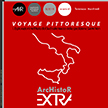
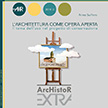
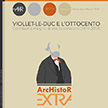

_2.jpg)



